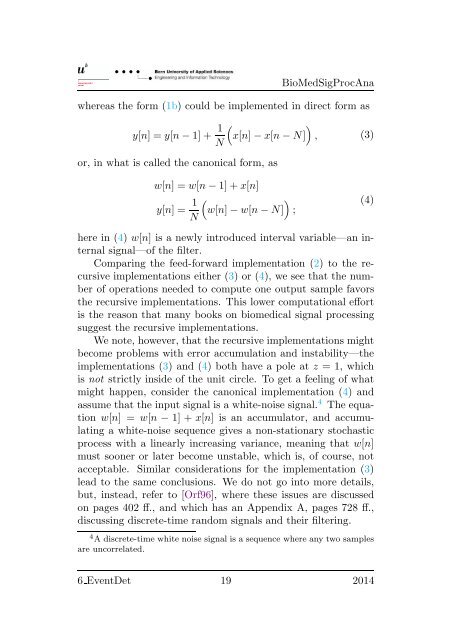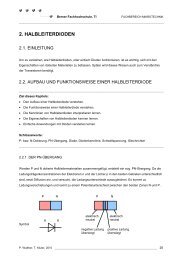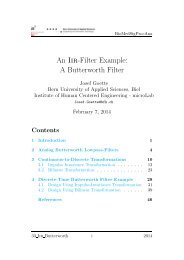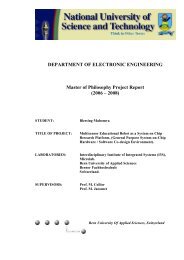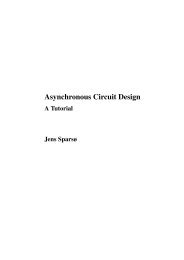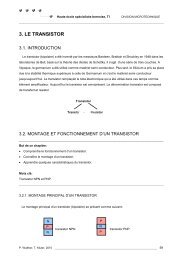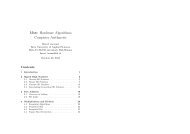Event Detection: Qrs-Complexes in Ecg Signals - microLab
Event Detection: Qrs-Complexes in Ecg Signals - microLab
Event Detection: Qrs-Complexes in Ecg Signals - microLab
- No tags were found...
Create successful ePaper yourself
Turn your PDF publications into a flip-book with our unique Google optimized e-Paper software.
BioMedSigProcAnawhereas the form (1b) could be implemented <strong>in</strong> direct form asy[n] = y[n − 1] + 1 Nor, <strong>in</strong> what is called the canonical form, as()x[n] − x[n − N] , (3)w[n] = w[n − 1] + x[n]y[n] = 1 ()w[n] − w[n − N] ;N(4)here <strong>in</strong> (4) w[n] is a newly <strong>in</strong>troduced <strong>in</strong>terval variable—an <strong>in</strong>ternalsignal—of the filter.Compar<strong>in</strong>g the feed-forward implementation (2) to the recursiveimplementations either (3) or (4), we see that the numberof operations needed to compute one output sample favorsthe recursive implementations. This lower computational effortis the reason that many books on biomedical signal process<strong>in</strong>gsuggest the recursive implementations.We note, however, that the recursive implementations mightbecome problems with error accumulation and <strong>in</strong>stability—theimplementations (3) and (4) both have a pole at z = 1, whichis not strictly <strong>in</strong>side of the unit circle. To get a feel<strong>in</strong>g of whatmight happen, consider the canonical implementation (4) andassume that the <strong>in</strong>put signal is a white-noise signal. 4 The equationw[n] = w[n − 1] + x[n] is an accumulator, and accumulat<strong>in</strong>ga white-noise sequence gives a non-stationary stochasticprocess with a l<strong>in</strong>early <strong>in</strong>creas<strong>in</strong>g variance, mean<strong>in</strong>g that w[n]must sooner or later become unstable, which is, of course, notacceptable. Similar considerations for the implementation (3)lead to the same conclusions. We do not go <strong>in</strong>to more details,but, <strong>in</strong>stead, refer to [Orf96], where these issues are discussedon pages 402 ff., and which has an Appendix A, pages 728 ff.,discuss<strong>in</strong>g discrete-time random signals and their filter<strong>in</strong>g.4 A discrete-time white noise signal is a sequence where any two samplesare uncorrelated.6 <strong>Event</strong>Det 19 2014


